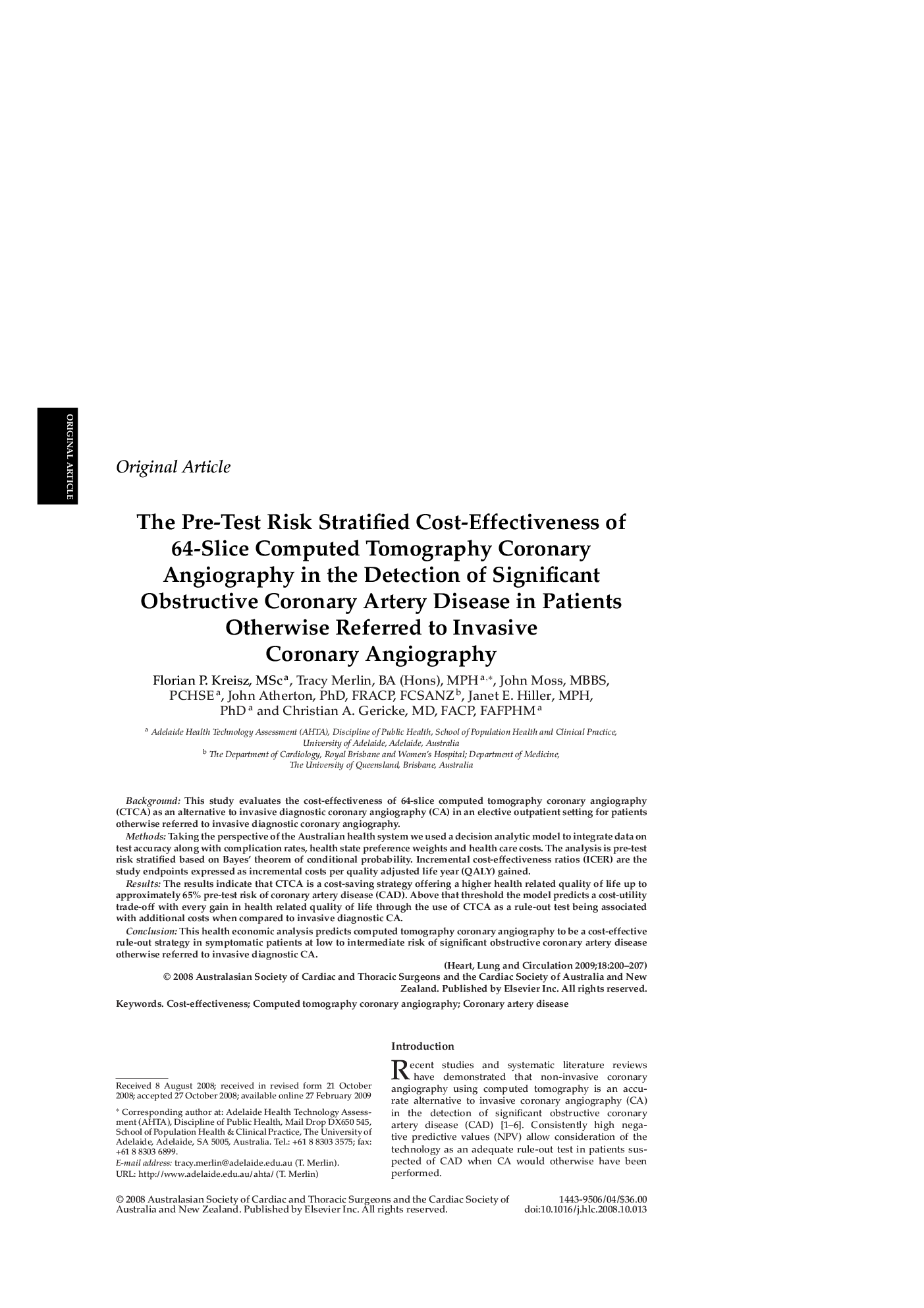| Article ID | Journal | Published Year | Pages | File Type |
|---|---|---|---|---|
| 2920237 | Heart, Lung and Circulation | 2009 | 8 Pages |
BackgroundThis study evaluates the cost-effectiveness of 64-slice computed tomography coronary angiography (CTCA) as an alternative to invasive diagnostic coronary angiography (CA) in an elective outpatient setting for patients otherwise referred to invasive diagnostic coronary angiography.MethodsTaking the perspective of the Australian health system we used a decision analytic model to integrate data on test accuracy along with complication rates, health state preference weights and health care costs. The analysis is pre-test risk stratified based on Bayes’ theorem of conditional probability. Incremental cost-effectiveness ratios (ICER) are the study endpoints expressed as incremental costs per quality adjusted life year (QALY) gained.ResultsThe results indicate that CTCA is a cost-saving strategy offering a higher health related quality of life up to approximately 65% pre-test risk of coronary artery disease (CAD). Above that threshold the model predicts a cost-utility trade-off with every gain in health related quality of life through the use of CTCA as a rule-out test being associated with additional costs when compared to invasive diagnostic CA.ConclusionThis health economic analysis predicts computed tomography coronary angiography to be a cost-effective rule-out strategy in symptomatic patients at low to intermediate risk of significant obstructive coronary artery disease otherwise referred to invasive diagnostic CA.
